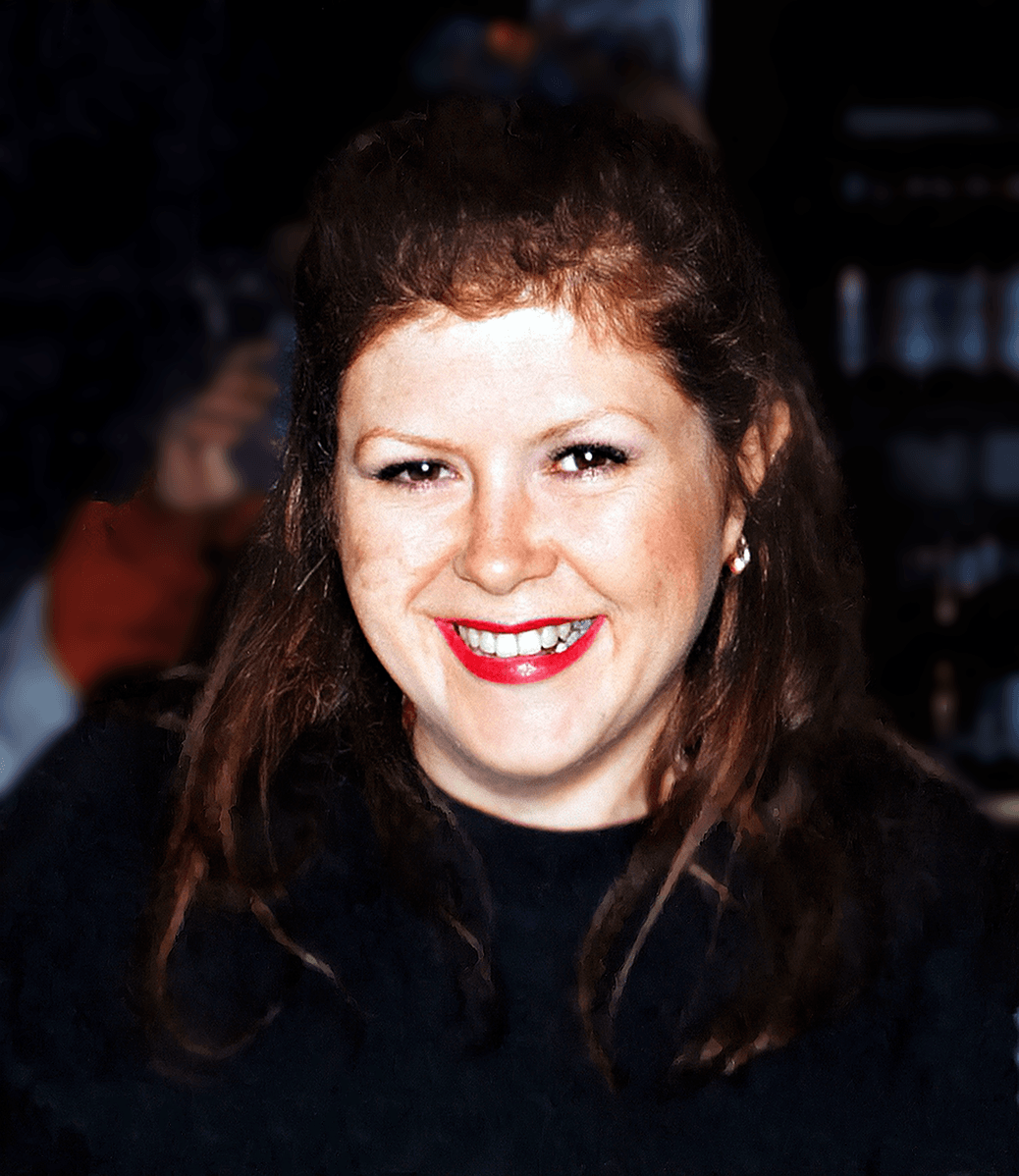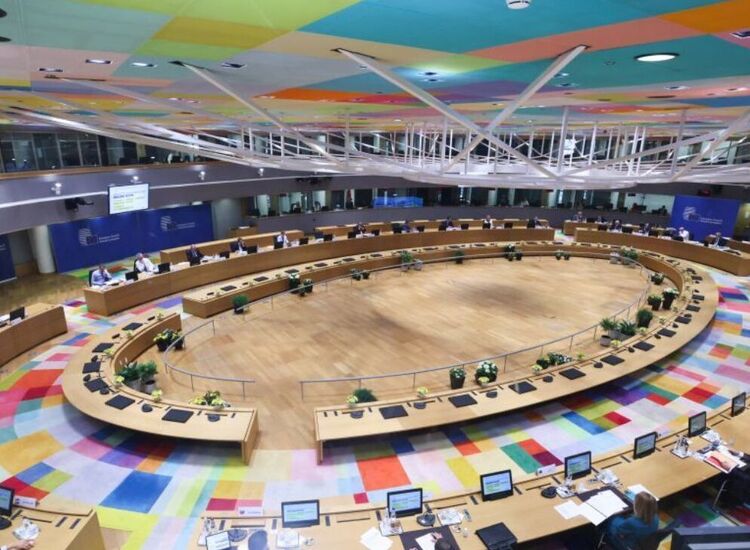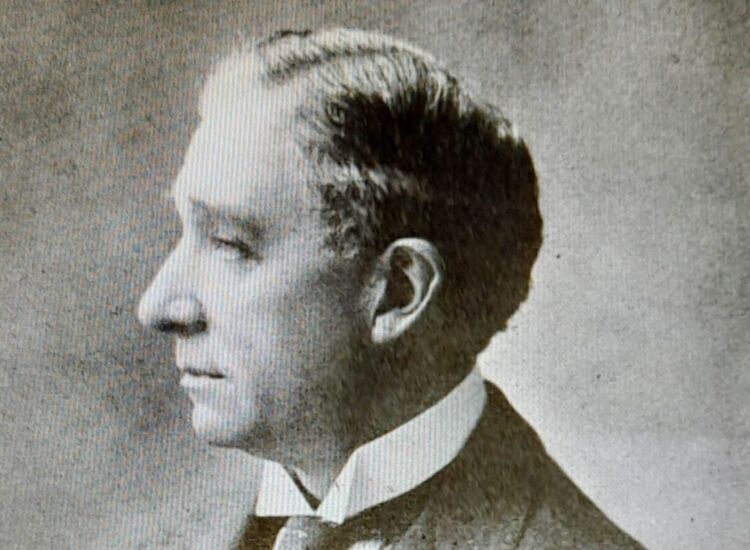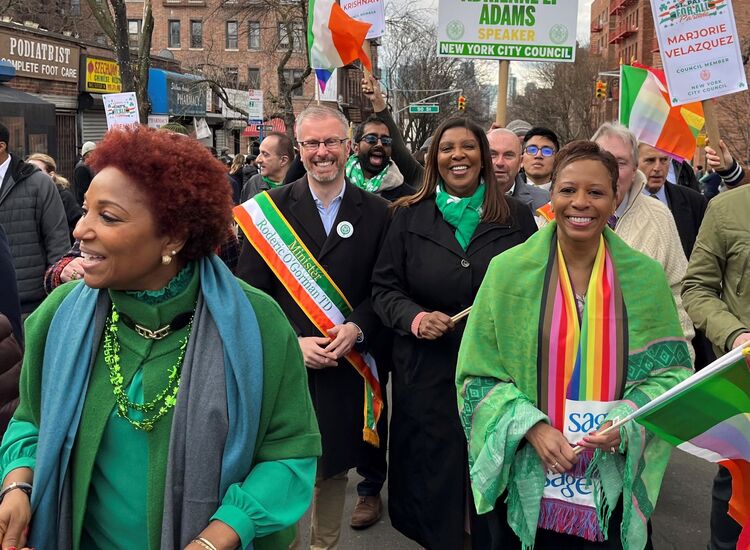This Christmas, like every Christmas, Irish people will be listening to Shane McGowan’s immortal 1987 Pogues’ ballad “Fairytale of New York.” Listening to that poignant song will be even sadder in the wake of Shane’s passing.
Although most know the life story of Shane MacGowan, few can say much about his partner in the duet, English songwriter and recording artist Kirsty MacColl.
MacColl was born into a musical family in in Salford, England. Her father Ewan MacColl, a celebrated socialist songwriter, penned a classic ballad many people mistakenly assume to be Irish — the 1949 folk song “Dirty Old Town,” which was recorded by the Dubliners and the Pogues. The lyrics describe MacColl’s industrial hometown of Salford in Lancashire.
Ewan MacColl later produced several LPs with Irish singer-songwriter Dominic Behan, brother of Irish playwright Brendan Behan. He also taught Simon and Garfunkel the old British ballad “Scarborough Fair” and penned the immortal 1957 hit “The First Time Ever I Saw Your Face,” which became a No. 1 hit for Roberta Flack in 1971.
There is a dispute about the origins of “A Fairy Tale of New York” Pogues’ Banjo player Jem Finer composed the melody and the original concept for the song about a sailor looking out over the ocean. However, Jem’s wife Marcia did not like the original story and suggested changing the lyrics to a conversation between a couple at Christmas. MacGowan began lyrics to the song and decided to name it after JP Donleavy's 1973 novel “A Fairy Tale of New York,” which Finer was reading at the time and had left lying around the recording studio.
In January 1986, the Pogues recorded the song during sessions with Elvis Costello, with bass player Cait O'Riordan originally singing the duet with Shane. The band, however, were not happy with the MacGowan and O’Riordan version and they decided to shelve the project.
O’Riordan left the band shortly after and the group finally recorded the song in early 1987, with MacGowan singing both the male and female roles. However, it was not until the third recording session in August 1987 that producer Steve Lillywhite took the track
back to his home studio and had his wife Kirsty MacColl lay down a new guide vocal for the song. MacColl worked on her vocals meticulously, mastering not only the song’s unusual phrasing, with MacGowan singing so far behind the beat he’s almost left behind, but also the lyrics’ mix of nostalgia and rage. “It’s a very nuanced way of singing. I spent a long time getting every note and rhythm right, for it to swing,” Lillywhite said. “Kirsty is perfect on it.”
Lillywhite brought the recording back to the studio and the Pogues adored MacColl's singing and realized she would be the ideal female voice in the duet. MacGowan later paid tribute to MacColl’s singing saying: "I was very grateful to Kirsty. I don't think it would have been such a big hit without her contribution.”
The song’s video was directed and shot by Peter Dougherty in New York during a bitterly cold week in November 1987. The video begins with MacGowan sitting at a piano as if playing the song's opening refrain: however, as MacGowan could not actually play the piano, the close-up shot featured the hands of the band's pianist James Fearnley, wearing MacGowan's rings on his fingers. Part of the video was filmed inside a real Lower East Side police station with actor Matt Dillon portraying a cop arresting MacGowan.
The song was released in the United Kingdom and Ireland in November 1987 and quickly became a hit, spending five weeks at Number 1 in the Irish charts. MacColl accompanied the Pogues on their British and European tour in 1988. She later said that touring with the band helped her overcome stage fright.
MacColl continued to perform and make records without any great success. In 1995 a compilation of her greatest songs called “Galore” reached the top ten in the U.K.; however, she did not record again for several years due to her frustration with the music business and a a severe case of writer's block. During this period she often traveled to Latin America. MacColl later admitted that during this period she was ready to abandon her music career and become an English teacher in South America. In 2000, she released “Tropical Brainstorm,” an album inspired by Cuban and Brazilian music that received rave reviews from the critics.
On Dec. 18, 2000, MacColl, her sons and her boyfriend were diving in Cozumel, Mexico at the Chankanaab reef, part of the National Marine Park of Cozumel, in a designated diving area that watercraft were restricted from entering. MacColl’s group was led by local veteran divemaster, Iván Díaz. As the group was surfacing from a dive, a powerboat moving at high speed entered the restricted area. MacColl saw the boat coming before her sons did. Louis, age 13 at the time, was not in its path, but Jamie, age 15, was. She was able to push him out of the way (he sustained minor head and rib injuries), but she was struck by the powerboat, which ran over her, crushing her head and chest and killing her instantly. She was just 39.
The boat was owned by a multimillionaire Mexican Guillermo Gonzales Nova. One of his employees, Cen Yam, was charged with culpable homicide, though eyewitnesses dispute the claim that Yam was at the helm. Yam was sentenced to two years in prison, but was allowed to pay the equivalent of only $90 and avoid jail time. MacColl’s family, outraged by the sentence, began a Justice for Kirsty campaign.
In 2002, she was honored with a memorial concert at London’s Royal Festival Hall. In 2004, 2005, and 2006, “Fairytale of New York” was voted the favorite Christmas song in a poll by music video channel VH1. The song was re-released in the UK in December 2005, with proceeds divided between the Justice for Kirsty Campaign and charities for the homeless. The re-release reached number 3 on the UK charts, and spent five weeks in the top 75 over the Christmas and New Year period. It reached the top 10 for the third time in its history in 2006, peaking at number 6, and charted again in December 2007. The song has also made the Top 20 in subsequent years, and has now spent more time in the top 20 than any other song.
Though the duet has never been higher than second on the British charts on Christmas Day, this year looks to be different. British bookies Ladbrokes have reduced their odds from 5-4 to a safer 1-4 bet. It would be a fitting tribute to Kirsty and Shane if their classic ballad finally made it to number one this Christmas.








